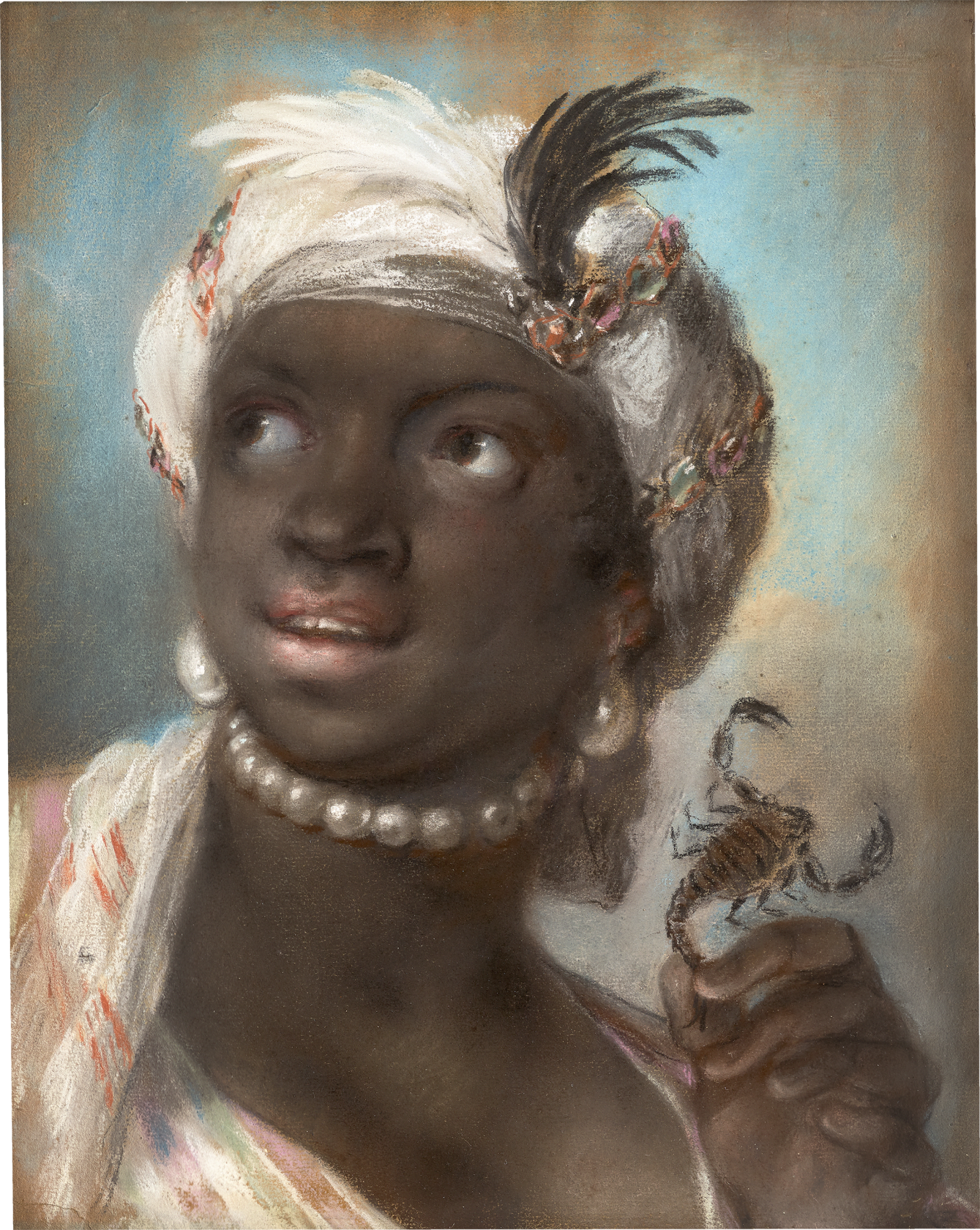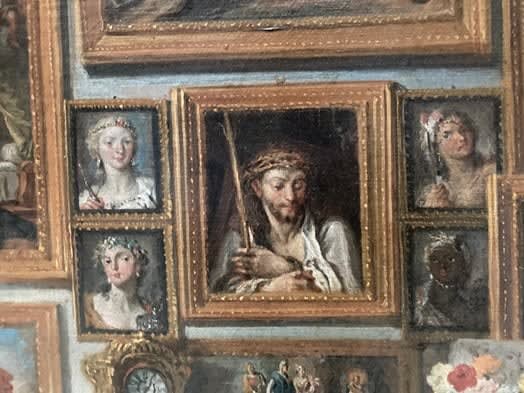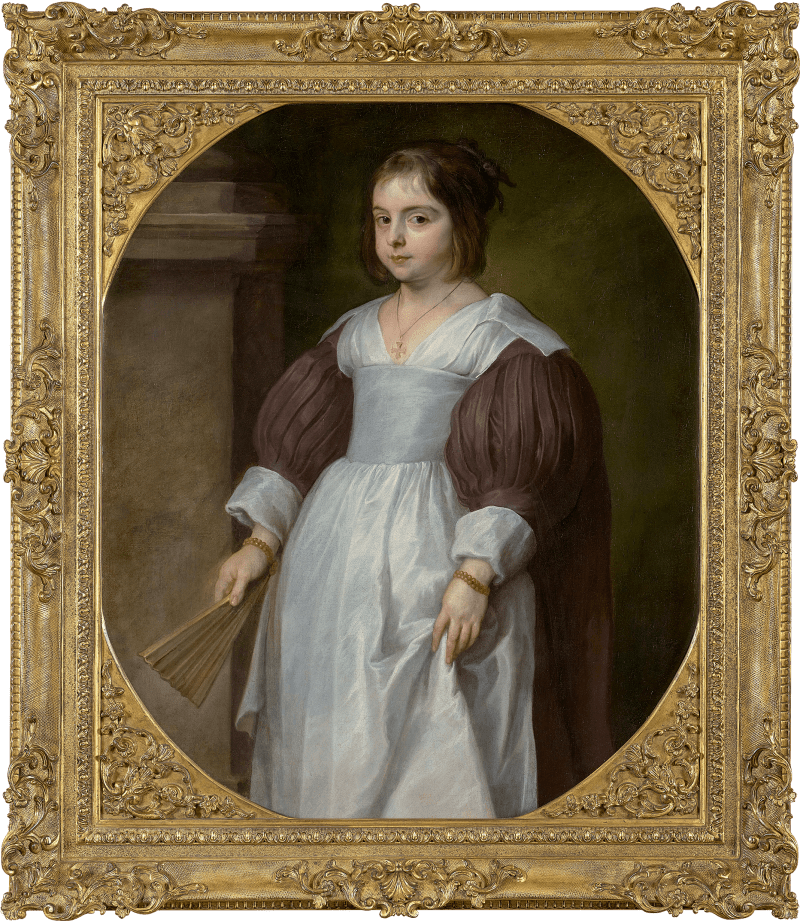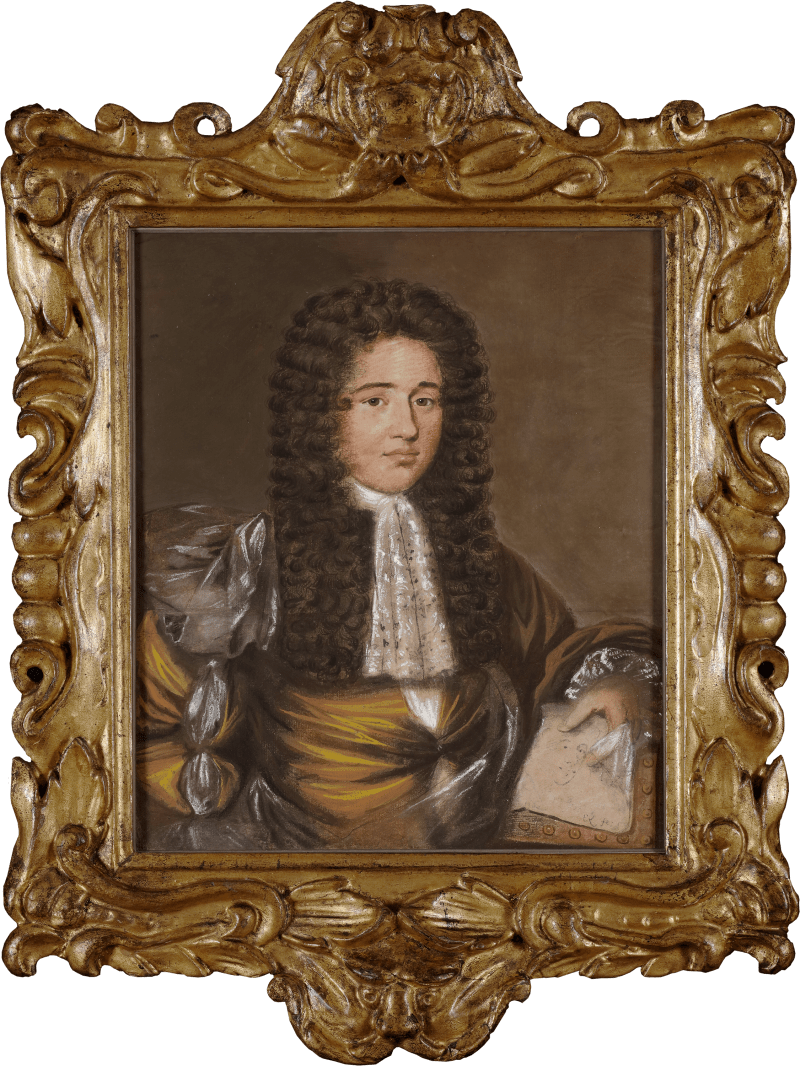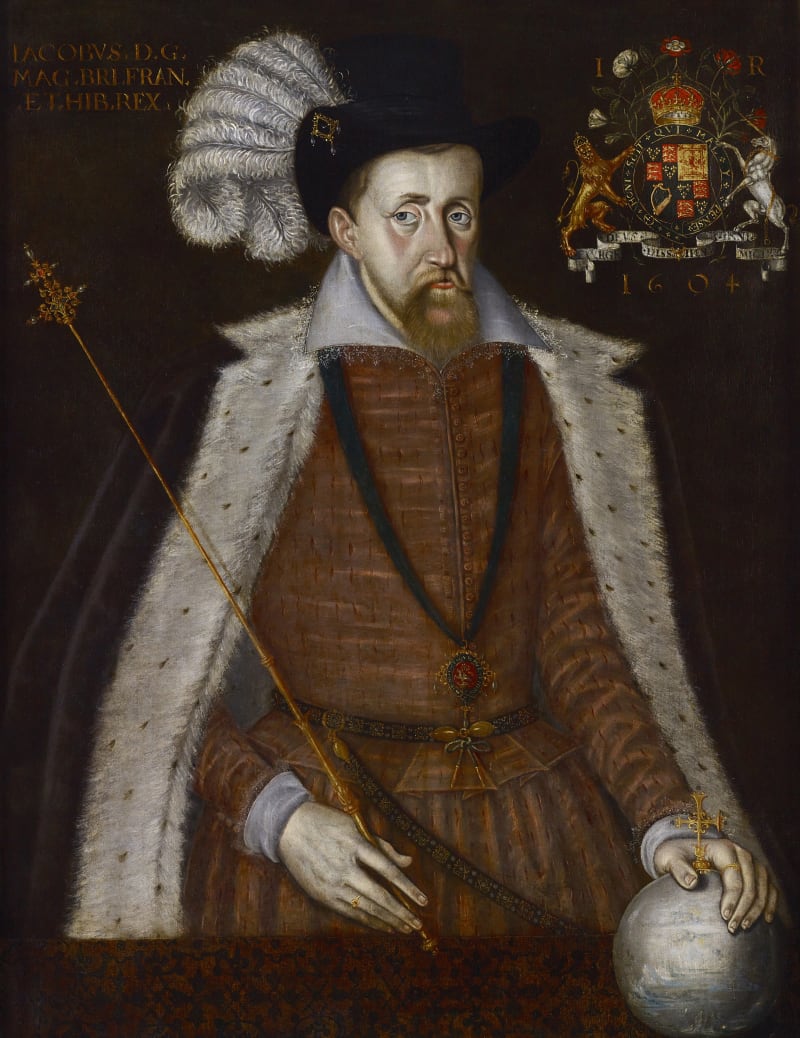We are grateful to Dr. Xavier F. Salomon for confirming the authorship of this work upon first-hand inspection. The present work will be included in Dr. Salomon’s forthcoming catalogue raisonné on the artist.
Rosalba Carriera was one of the most celebrated women artists in eighteenth-century Europe and a pioneer of the pastel medium. Her technical experimentation and virtuoso handling helped transform pastel into a medium celebrated for its subtlety of tone and rich colour.[1] This recently discovered work is part of a series of allegorical representations of the ‘four continents’ and was undertaken in around 1720. Carriera’s allegorical works are notable for their lively modes of expression and heightened theatrics - a freedom that was not always permitted in her commissioned portraits – and encapsulate the flamboyant rococo style for which she was renowned throughout Europe.
As a woman artist in the 18th century, Carriera faced significant challenges. Largely excluded from formal art education and professional societies, it...
We are grateful to Dr. Xavier F. Salomon for confirming the authorship of this work upon first-hand inspection. The present work will be included in Dr. Salomon’s forthcoming catalogue raisonné on the artist.
Rosalba Carriera was one of the most celebrated women artists in eighteenth-century Europe and a pioneer of the pastel medium. Her technical experimentation and virtuoso handling helped transform pastel into a medium celebrated for its subtlety of tone and rich colour.[1] This recently discovered work is part of a series of allegorical representations of the ‘four continents’ and was undertaken in around 1720. Carriera’s allegorical works are notable for their lively modes of expression and heightened theatrics - a freedom that was not always permitted in her commissioned portraits – and encapsulate the flamboyant rococo style for which she was renowned throughout Europe.
As a woman artist in the 18th century, Carriera faced significant challenges. Largely excluded from formal art education and professional societies, it was difficult for women artists to establish professional respectability. However, Carriera’s technical brilliance and determination broke through these barriers and succeeded in overturning oppressive gender norms that stated women were incapable of serious artistic pursuits. Carriera’s mastery of portraiture – a genre dominated by men at this time - was also significant, dismantling the notion that women were only capable of depicting ‘feminine’ subjects such as still-lifes and domestic scenes.
After gaining great acclaim in Italy, in 1720 Carriera travelled to Paris where she was received with great excitement by the French court and was immediately elected a member of the prestigious Académie Française. Her virtuoso fusion of decoration and movement impressed the King and his court, and Carriera’s services were soon sought throughout Europe. With her international reputation now firmly established, she returned to Venice where she remained throughout the 1720s, painting portraits of wealthy visitors and grand tourists. Her work was in high demand throughout the decade and into the next, and she was frequently commissioned by European royal and noble families. Her output only started to decline following the death of her beloved sister in 1737, together with failing eyesight which left her blind by the mid-1740s. Carriera died in 1757 as a prosperous lady who had conquered adversities and blazed a new trail for subsequent generations of women artists.
In the eighteenth century many European countries expanded their commercial interests and engaged in extensive exploration overseas, bringing them into closer contact with distant, diverse cultures which intrigued and excited those at home. This fascination manifested itself in allegorical depictions of the continents which derived from ancient Egyptian, Greek and Roman prototypes which often took the form of female bodies, and were presented in a series of regions, continents, rivers, oceans, and even the cosmos.[2] Africa, America, Asia, and Europe were all subjected to allegorical interpretation by artists who were responding to the desires of their patrons, many of whom viewed these distant lands through the prism of a colonial, Eurocentric mindset. As a result, works such as this provide an important window into the historical context, attitudes, and perceptions of Africa in eighteenth-century Europe.
In this work, the figure of Africa glances up and away from the viewer as if caught mid-movement, conversing with someone beyond the frame. Her appearance is typical of allegorical figures from this period which generally combined a sexualised young woman with certain attributes associated with the particular continent. These were standardised following the publication of Iconologia (also known as ‘Moral Emblems’) by the Italian humanist Cesare Ripa in 1593. A later illustrated edition published in 1603 shows the figure of Africa wearing a pearl and coral necklace and holding a sheaf of cornstalks, representing fertile lands; she is also shown beside a lion and wearing a headdress made of an elephant’s head and trunk, with a scorpion in her raised right hand (fig. 1). Such was the popularity of Ripa’s Iconologia, that it was published in nine editions in Italy and in eight separate editions in England, France, Germany and Holland.[3]
Although Ripa’s illustrations make no attempt to differentiate the skin colour between the allegorical figures, Carriera, in this work, has relied on a combination of brown pigments and physical characteristics to classify the figure as Africa. This aligns with prevailing attitudes towards race in Europe at this date, which promoted the idea that people around the world could be placed in specific racial categories based on physical appearance.[4] In the case of African people, references were often made to the appearance of their teeth, which the French physician and traveller Francois Bernier described as ‘whiter than the finest ivory’ in his highly influential essay ‘A New Division of the Earth by Different Species or Races of Men’ published in 1684.[5] It is to this essay that historians typically trace the modern understanding of the word ‘race’, and it was through visual imagery, such as paintings, prints, and sculpture, that these repressive concepts of race were shared with a wider audience.
Shown bedecked in pearls – symbolic of purity and a reference to the mineral riches of Africa – and adorned in vibrant fabrics with an elaborate headdress, the allegorical figure of Africa is a fusion of traditional exotism and coquettish charm. The same is true of the three other allegorical figures of Asia, Europe, and America, versions of which can be found in museums worldwide, including the National Museum of Women in the Arts, Washington (America), Cooper-Hewitt, New York (Europe and America). This is achieved in no small part by the velvety effects of Carriera’s pastel technique, through which she attained a novel and compelling realism. As has also been argued, Carriera played a significant part in expressing a more refined texture and modulation of black skin than had hitherto been achieved – albeit a response to a taste for heightened exoticism.[6]
Carriera’s allegorical depictions of continents were typically displayed together as a set to demonstrate the patron’s appreciation for arts, culture, and knowledge. One complete set was commissioned by Cardinal Silvio Valenti Gonzaga, evidenced by an interior view of his picture gallery painted by Giovanni Panini in 1749 in which the four continents can be seen towards the lower left [fig. 1]. Hung in the centre is an image of Christ, also by Carriera and listed together with a Madonna and the continents in an inventory of the collection from 1756.[7] The whereabouts of the Gonzaga set of continents is at present unknown and they were last recorded in the collection of Cardinal Luigi Valenti Gonzaga, nephew of Silvio Valenti Gonzaga, who inherited much of the collection from his uncle.[8] Until recently, the allegory of Africa in the Gonzaga collection was considered to be the work now in the Gemäldegalerie, Dresden.[9][10] However, the composition of the latter is markedly different from the work visible in the Panini painting and was most likely a variation on the same theme undertaken by Carriera around the same date. Although several copies of the Gonzaga composition exist, the present work is the only example by Carriera’s hand to have so far come to light. It has not been possible at this stage to trace the provenance of the present work back beyond the early twentieth century. However, given its evident quality and the absence of any other recorded autograph versions, a Gonzaga provenance remains a distinct possibility.
The present work was owned by George Kidston CMG (1873-1954), a British diplomat who was head of the Eastern Department of the Foreign Office, 1919-20. It then passed to his son, John Bonham Kidston (1922-1968) who bequeathed it to his wife, Patricia A. Kidston (1927-2021), whose descendants consigned it to auction in London in 2022.
[1] For further information on Carriera’s contribution to the development of pastel as a medium, see Thea Burns, The Invention of Pastel Painting (London: Archetype, 2007), 101-130, quoted in Wunsch, O. “Rosalba Carriera’s Four Continents and the Commerce of Skin,” Journal18, Issue 10 1720 (Fall 2020), https://www.journal18.org/5218.
[2] Spira, F. (2021) Allegories of the Four Continents [Online]. Available at https://www.metmuseum.org/toah/hd/alfc/hd_alfc.htm (Accessed: 22 May 2023)
[3] Spira, F. (2021) Allegories of the Four Continents [Online]. Available at https://www.metmuseum.org/toah/hd/alfc/hd_alfc.htm (Accessed: 22 May 2023)
[4] Wunsch, O. “Rosalba Carriera’s Four Continents and the Commerce of Skin,” Journal18, Issue 10 1720 (Fall 2020), https://www.journal18.org/5218.
[5] Bernier, F. “Nouvelle division de la terre, par les differentes especes ou races d’hommes qui l’habitent, envoyée par un fameux voyageur à M. l’Abbé de la ***** à peu prés en ces termes,” Journal des sçavans (April 24, 1684), pp. 133-140.
[6] Wunsch, O. “Rosalba Carriera’s Four Continents and the Commerce of Skin,” Journal18, Issue 10 1720 (Fall 2020), https://www.journal18.org/5218.
[7] Catalogo de’ quadri tuttavia esistenti nella Galleria della Ch. Mem. Dell’E.mo Sign. Card. Silvio Valenti. 1756. Nos. 442, 443 (Christ and Madonna); Nos. 438,439,440,441 (Four Continents). A transcription of the inventory can be found in Vodret, R (2005) Ritratto di una collezione: Pannini e la Galleria del Cardinale Silvio Valenti Gonzaga, Milan: Skira, pp. 329-352. The Rosalba Carriera works are listed on pp. 340-341.
[8] Cardinal Luigi Valenti Gonzaga inherited most of the collection and in 1763 sold 300 paintings in two auctions in Amsterdam: de Leth/de Winter, 18 May 1763 (Lugt no. 1296); De Winter, 28 September 1763 (Lugt no. 1320). The Four Continents were not included in these auctions. For a transcribed list of works divided between Silvio Valenti Gonzaga’s heirs in 1777 see Vodret, R (2005), pp 353-371. The Four Continents are listed as nos. 438-441 on p. 363.
[9] see Vodret, R (2005), p. 29
[10] Inv.: Gal.-Nr. P 32.

